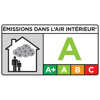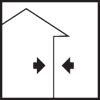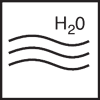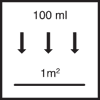Article No. 4200542001
Adhesive primer for metals, rigid PVC & wood that protects against rust and seals off substances in the wood

Product specifications
The stated values represent typical product characteristics and are not to be construed as binding product specifications.
Field of application
- Primer and intermediate coat
- Metal substrates, e.g. (galvanised) steel, pure aluminium, copper, brass
- Rigid PVC
- For use on interior and exterior wood
Properties
- Very good adhesion to the substrate
- Protects against corrosion
- Water-based
- Reduces yellow stains caused by water soluble substances in the wood when light shades of finishing coat are used
- Low solvent, mild odour
-
Preparation
-
Substrate requirements
Dimensionally stable wood building elements: wood moisture content 11-15%
Wood building elements with limited or no dimensional stability: wood moisture content max. 18%
-
Preparations
Thoroughly remove any dirt, grease and non-adhering old coatings.
Wood substrates:
Sand grey and weathered wood surfaces down to sound, bright wood.
Remove loose and torn knots as well as resin that bleeds and clean with a suitable product (e.g. Remmers thinner & brush cleaner).
Exterior wood that needs to be protected against soft rot and blue stain must be pre-treated with a suitable wood preservative* (*Use biocides safely. Always read the label and product information before use).
Observe BFS Code of Practice No. 18 "Coatings on Wood and Wooden Working Materials in Outdoor Areas".
Iron, steel:
Derust thoroughly. Remove scale layers and rolling skin (derust manually to SA 3 standard of cleanliness). The best results are achieved if the substrate has been sand blasted to SA 2.5 standard of cleanliness (DIN EN ISO 12944-4).
Zinc (galvanised steel):
Clean with an ammonium-based wetting agent, using an abrasive pad. Observe BFS Code of Practice No. 5.
Aluminium (not anodised):
Apply an ammoniacal wetting agent using an abrasive pad, or clean with Remmers Thinner & Brush Cleaner or a cleaning agent containing phosphoric acid. Observe the instructions of BFS Code of Practice No. 6.
Plastics:
Treat rigid PVC, PUR, polyester, acrylic and melamine resin coatings (HPL/CPL) with Remmers Thinner & Brush Cleaner and a non-woven abrasive.
-
-
Application
-
Stir well.
Apply with a brush, roller or by spraying.
After drying and intermediate sanding, coat with a water-based or solvent-based lacquer.
Observe the waiting times between coats.
-
Application instructions
-
Check the product’s compatibility, adhesion and sealing effect on the substrate by applying to trial areas.
Do not use on wood impregnated with boron salts.
-
Drying
Approx. 12 hours at 20 °C and 65% relative humidity.
Longer drying times can improve the sealing effect.
The product’s insulating effect may be impaired if it is diluted too thinly, if the wood is too wet or if the recommended coating sequence, application volumes and drying times are not observed. With water-based coating systems, there is always the residual risk that substances contained in the wood will leach out.
-
Thinning
Ready to use
-
-
Working tools / cleaning
-
Brush with synthetic bristles, foam roller, suitable spraying equipment
Clean tools immediately after use with water.
Ensure that any residue from cleaning is disposed of correctly.
-
Storage / shelf life
-
If stored unopened in its original container in a cool, dry place and protected against frost, the product will keep for at least 24 months.
-
Usage
-
100 ml/m² per coat
2 coats are necessary to provide protection against corrosion and to seal off substances contained in the wood.
-
General information
-
On planed larch and softwoods with a high resin content, the coating may have reduced adhesion and resistance to weathering. This is especially the case on horizontal year rings, knots and areas of winter growth that are high in resin. Maintenance and renovation must be carried out more frequently on these surfaces.
The only remedy for this is pre-weathering or very coarse sanding (P80).
If these wood types are rough-sawn, considerably longer maintenance and renovation intervals are to be expected.In the presence of air and water, aluminium forms an oxide layer that can have a negative impact on the product characteristics of coatings. Therefore, when working with aluminium, the coating must be applied immediately after pre-treating the substrate.
Observe the regulations concerning design principles for wood protection.
Do not use on horizontal surfaces without drainage slopes and without edge radius, avoid accumulated moisture.
-
-
Disposal instructions
-
Larger quantities of leftover product should be disposed of in the original containers in accordance with the applicable regulations. Completely empty, clean containers should be recycled. Do not dispose of together with household waste. Do not allow to enter the sewage system. Do not empty into drains.
-
-
Safety / regulations
-
For further information on the safety aspects of transporting, storing and handling the product and on disposal and environmental matters, please see the current Safety Data Sheet.
-














